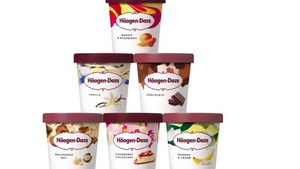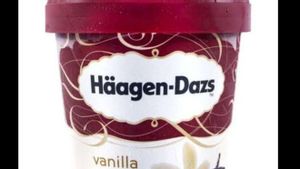YOGYAKARTA – The Indonesian Food and Drug Administration (BPOM) has withdrawn the distribution permit for Haagen-Dazs vanilla ice cream products. In the vanilla variant of soft ice cream from the brand from the United States, the levels of ethylene oxide were found to exceed the European Union (EU) permit limit.
What are the dangers of ethylene oxide levels for health if it exceeds the safe limit for its use? Launching Food Watch, Friday, July 22, in September 2020, a number of foods in France were withdrawn because they contain ethylene oxide (C2H2O) which is carcinogenic and is prohibited. The first time Belgium reported that sesame seeds from India were contaminated with ethylene oxide. While in this case ethylene oxide is used to fight fungi and bacteria in a number of countries outside the EU. In Europe, food manufacturers especially those containing ethylene oxide residues are considered unlawful.
Ethylene oxide, according to the CDC (Centers For Disease Control and Prevention), is a flammable gas and has a slightly sweet aroma. Exposure to ethylene oxide can cause headache, nausea, vomiting, diarrhea, difficulty breathing, drowsiness, weakness, fatigue, eye and skin burns, frostbite, and reproductive effects. The level of exposure and risk depends on the dose, duration, and severity of the work performed.

On the one hand, ethylene oxide is widely used in industry, especially to make ethylene glycol, a product used in antifreeze and polyester. Some workers at risk of exposure to ethylene oxide are factory workers who use it to produce solvents, antifreeze, textiles, detergents, adhesives, and polyurethane foam. In addition, factory workers who produce ethylene oxide and agricultural workers who use it as insect control are also at high risk. In addition, hospital workers use ethylene oxide to sterilize medical equipment and supplies.
The use of ethylene oxide in food, is used to process certain foodstuffs before being exported. This ingredient is used in France for use in sesame seeds, ice cream, pepper, ginger, onions, coffee, bread, pastries, and ready-to-eat foods. Withdrawal from the circulation of products contaminated with ethylene oxide, aims to protect the health of consumers.
In ice cream, ethylene oxide is used as a thickening agent. Based on the decision of the European Commission, it clearly states that products containing the additive E410 which are known to be contaminated with ethylene oxide, are declared risky. In the legal provisions stipulated in the General Food Law COM 178/2002, there is no safe level of exposure for consumers. Therefore any level can present a potential risk for consumers.
The threshold that can be detected is 0.02 mg/kg. Even at very low levels of exposure, it is associated with cancer risk.
VOIR éGALEMENT:
The Haagen-Dazs ice cream products that were withdrawn from circulation were the vanilla variant with packaging of 100 ml (Minicup), 473 ml (Pint), and 9.37 liters (Bulk Can). Launching Kompas, the findings of traces of ethylene oxide in very small quantities with a production date range of 01/06/2021 to 03/15/2022 and a good date for consumption 01/08/2022 to 27/07/2023.
The Haagen-Dazs party, represented by the CEO of Haagen-Dazs Indonesia, Dita Soedarjo, informed consumers who had already purchased the vanilla Haagen Dazs product with the production code and date of consumption, which could be exchanged for other variants at the Haagen Dazs store. In addition to the vanilla variant, there are 11 other variants that were withdrawn from circulation.
The English, Chinese, Japanese, Arabic, and French versions are automatically generated by the AI. So there may still be inaccuracies in translating, please always see Indonesian as our main language. (system supported by DigitalSiber.id)

















